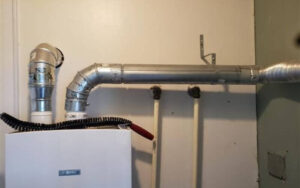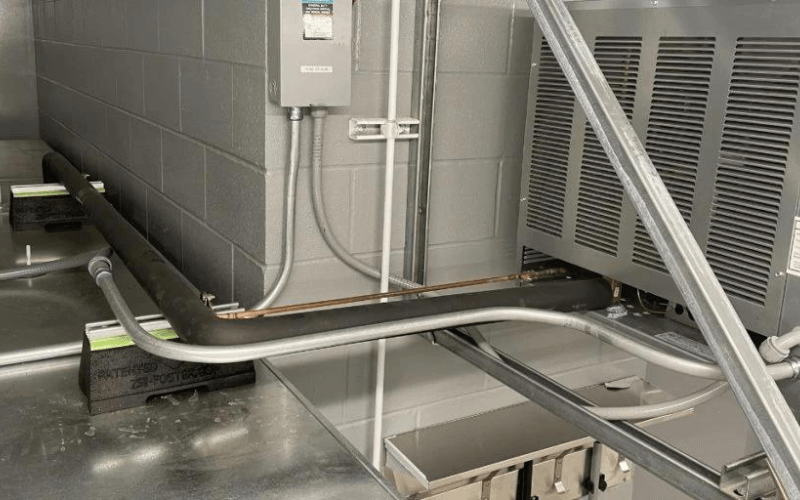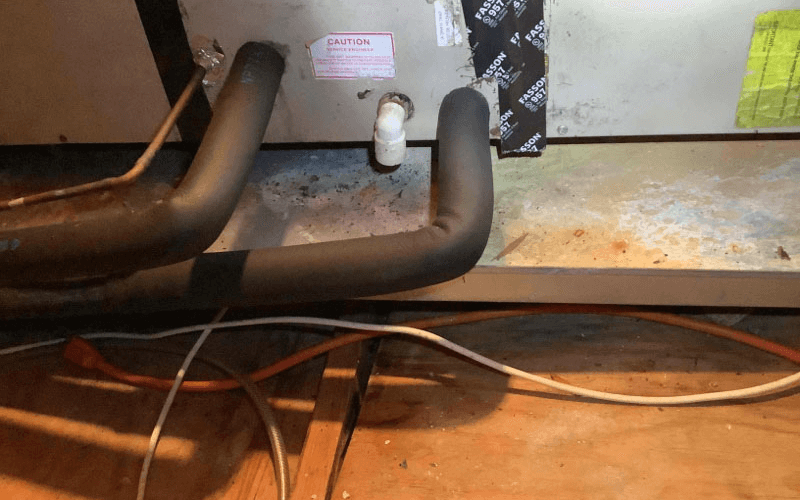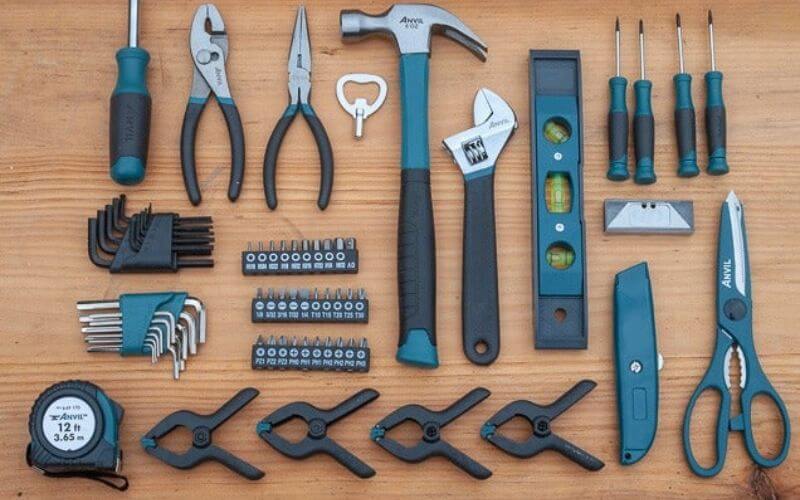Tankless water heaters are used daily because of their capacity to demand hot water and conserve energy and space. Choosing the best tankless water heater for your home might be challenging. What size tankless water heater should a household of 4 have? This article will give information about the size of a tankless water heater for four family members. We’ll review the factors to consider when choosing the size and kind of tankless water heater, emphasizing electric and gas versions.
Table of Contents
ToggleSize Influencing Factors:
The following factors influence the size of a tankless water heater:
The Flow Rate (GPM):
The flow rate, gallons per minute, is the first consideration when sizing a tankless water heater (GPM). This figure indicates how much hot water you will normally want at any given time.
| Image | Product | Features | Price |
|
Best Seller
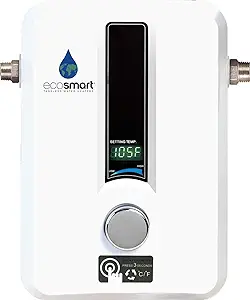
|
EcoSmart ECO 11 Electric Tankless Water Heater, |
13KW at 240 Volts with Patented Self Modulating Technology |
$192.07
|
|
Best Seller

|
Rheem 18kW 240V Tankless Electric Water Heater |
Precise LED thermostat, self-modulating, durable copper, easy installation, digital display. |
$449.17 |
|
Best Seller

|
EcoSmart ECO 18 Electric Tankless Water Heater |
|
$444.99 |
|
Best Seller
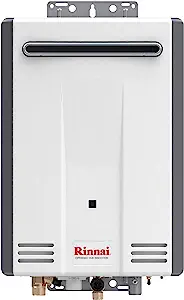
|
Rinnai V53DeP Tankless Hot Water Heater, 5.3 GPM, Propane, |
Endless hot water, energy-efficient, optimal pressure, |
$669.71 |
|
Best Seller
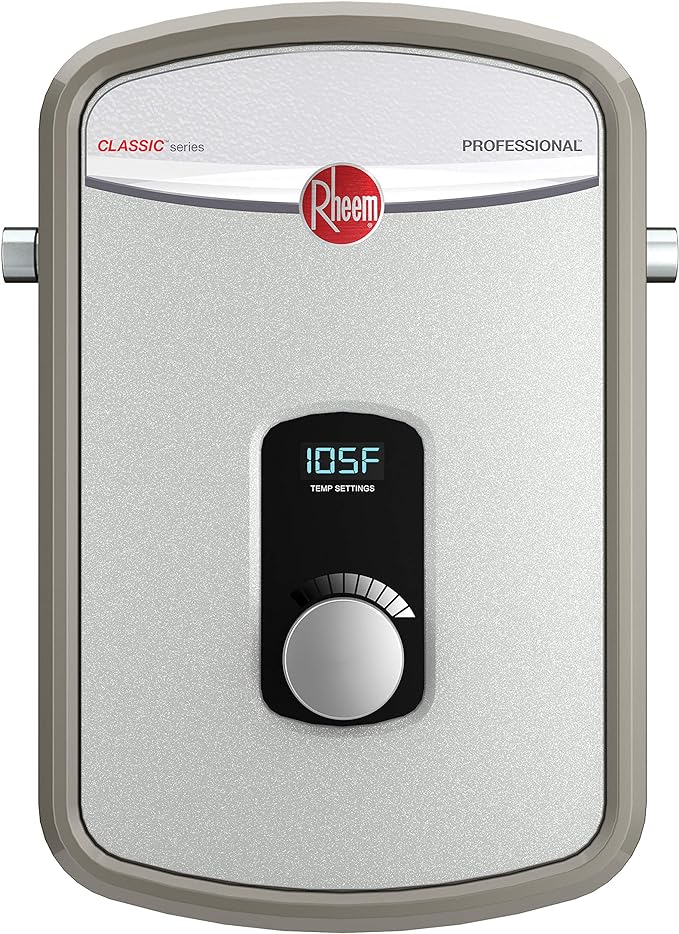
|
Rheem 8kW 240V Tankless Electric Water Heater |
Adjustable temperature dial, self-modulating power, continuous hot water supply. |
$240.11
|
Temperature Increase:
Aside from the flow rate, consider the temperature difference between the incoming cold water (groundwater temperature) and the required temperature at the faucets. As the name implies, the temperature rise is the amount your water will need to be heated.
Subtract the entering water temperature from the desired temperature to get the required temperature rise. For example, if the water entering your home is 70°F, and you want to heat it to 120°F, a tankless water heater capable of adding 50°F is required. When there is a temperature difference between the groundwater and the target fixture water temperature, the water heater cannot supply as many fixtures simultaneously.
In San Diego, the average groundwater temperature is 65 degrees Fahrenheit. Still, as the weather cools in the winter, your water heater may need to supply additional heat to warm the water. Because water is typically heated to between 105 and 120 degrees Fahrenheit, San Diegans would require tankless water heaters with a temperature rise of roughly 55 degrees Fahrenheit.
Demand:
Demand is the amount of hot water fixtures and appliances consumed during peak hours.
Electric vs. gas water heater:
In one minute, a gas tankless water heater can heat up to 5 gallons of water at 70 degrees Fahrenheit. In contrast, electric tankless water heaters can only heat two gallons of water to 70°F at a time. The temperature of 70°F was chosen because it takes that long for typical 40°F groundwater to reach a searing 110°F.
Also, Read: How to Replace Drain Valve on Water Heater?
What Size Tankless Water Heater Do I Need For A 2, 4, Or 6-Person Household?
One of the most frequently asked topics concerns the size of a tankless water heater necessary for a large home. A three-person tankless water heater will be smaller than one for a five-person home.
Tankless Electric Water Heaters:
Tankless electric water heaters are popular due to their small size and high energy efficiency. When shopping for a tankless electric water heater, keep the following factors in mind:
Electricity Is Essential:
A lot of power is needed for electric models. Your electrical panel might need to be changed if it cannot handle the load.
Rate of Volumetric Flow:
Due to their low flow rates, Tankless electric water heaters are frequently utilized for point-of-use applications in small homes. They might not be the best option for larger homes with higher hot water demands.
Energy Effective:
Since electric models only heat water when necessary, they consume less energy over time. Consequently, they are extremely productive.
Also, Read: How To Relight Pilot Light On Water Heater?
Water Heaters Powered By Natural Gas:
Natural gas or propane tankless water heaters are popular because of their rapid heating and High Flow Rates. Consider the following factors while shopping for a tankless gas water heater:
Provision Of Natural Gas:
Determine whether you can access a natural gas hookup or a propane tank. Obtaining one can be pricey and influence your selection if you lack one.
Flow Rate:
Since tankless gas heaters can accommodate higher flow rates, they are appropriate for bigger households with variable hot water needs.
Ventilation:
Proper ventilation is required to release combustion gases from gas models safely. Consult an expert to guarantee sufficient ventilation in your home.
Replacement Indicators for Water Heaters:
Replacing indicators for these water heaters has become necessary due to lack of availability; costs have skyrocketed in the last seven-and-a-half years.
Conclusion:
For maximum convenience and savings, invest in a tankless water heater. First, ensure it meets both anticipated temperature rise and flow rate requirements – gas heaters have higher flow rates, making them suitable for households with multiple residents. In contrast, electric tankless heaters consume less energy and are better suited to smaller homes with limited heating requirements. Which gas or electric model you go for depends entirely upon personal choice, building layout, and budget considerations; in any event, long-term energy savings and an endless supply of hot water may justify the initial outlay over time.
FAQ:
What size tankless water heater do I need for my family of four?
Before purchasing and installing, the appropriate size water heater must be determined. A typical guideline for selecting an adequate tankless heater for dwelling use is 3.5 GPM for two fixtures simultaneously requiring hot water supply; three fixtures equal 5 GPM of total flow rate, while three to four simultaneous fixtures require 7 GPM total flow rate.
What size tankless water heater am I looking for?
Keep track of the number of hot water appliances you intend to use concurrently and the total flow rate (gallons per minute). This is the flow rate recommended for a demand water heater. Because of their ability to save energy and space, tankless water heaters have increased in favor of a technique of producing on-demand hot water. On the other hand, selecting the greatest tankless water heater for your home might be difficult.




